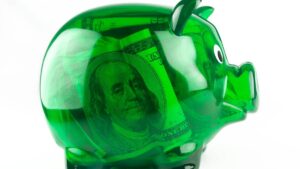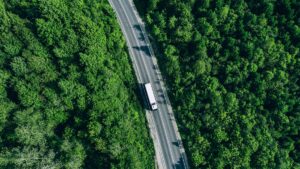GOT GAS: West seeks to be best for green hydrogen

The West is looking to be tops for hydrogen just like it is for LNG. Pic: via Getty Images
Long known for being Australia’s bastion for liquefied natural gas exports – claims from the pretenders based out of Queensland port of Gladstone notwithstanding – Western Australia is now starting to put the pieces together to be the country’s green hydrogen champion.
While the state government has taken steps to push hydrogen as the eventual replacement for LNG – including investing almost $90m in its WA Renewable Hydrogen Strategy – two recent developments may just give Australia’s largest state a leg up.
First up is Korean Electric Power Corporation signing a memorandum of understanding with the Western Green Energy Hub to study development of a large-scale renewable hydrogen hub in the Goldfields-Esperance region that will produce the gas for export to South Korea.
Under the MoU, the partners will look to develop the reported 15,000km2 site into a hub capable of producing 3.5 million tonnes of green hydrogen per annum.
The electrolysers that will crack water into hydrogen and oxygen will be powered by a proposed renewable energy farm with 3,000 wind turbines and 25 million solar panel modules.
South Korea is expected to have a ready market for hydrogen with its government recently expanding its multi-million-dollar subsidy program for hydrogen fuel-cell vehicles that effectively halves their cost.
Meanwhile, three traditional owner groups have reached an agreement with climate crisis investment and advisory firm Pollination to establish a $3bn green hydrogen project in the East Kimberley.
The proposed East Kimberley Clean Energy project, which will be shared equally between all four parties, will use more than a million solar panels to power electrolysers to produce 50,000t of hydrogen per annum.
It will then use renewable energy from an existing hydroelectric facility near the Ord River to convert the hydrogen into 250,000tpa of ammonia for use as agricultural fertilisers for sale in Australia and export.
Becoming a hydrogen superpower?
Are these and other developments enough to help Western Australia achieve its ambition of becoming Australia’s leading hydrogen producing state – a la the Australian Energy Market Operator’s Hydrogen Superpower scenario?
Well no. But they certainly will contribute to meeting that objective as well as the broader goal of turning Australia into a hydrogen superpower.
Much more effort – and more importantly BINDING agreements – will be needed to really drive green hydrogen development both in the state and the rest of Australia.
Nor are the other states likely to stand still with the Federal Government recently approving a $51m plant in Wodonga, Victoria, that will use a 10MW electrolyser to produce renewable hydrogen for blending into gas networks.
Meanwhile, the Hanguk-Hoju Hydrogen Consortium of Korea Zinc, petrochemicals group Hanwha Impact and fellow Korean conglomerate SK Gas are advancing their proposed green hydrogen hub at Abbot Point in north Queensland from concept to feasibility studies.
This is a mega project on the same scale as the Western Energy Hub and is planned to produce 1.8Mt of green ammonia per annum for export to South Korea.
Being somewhat ahead of its WA rival, Hanguk-Hoju will have to make a final investment decision in 2027 to meet its deadline of starting ammonia shipments in 2023.
These are not all the hydrogen projects – big or small – in Australia. And long story short, there’s plenty of work to be done.
But ultimately, Australia seems to be progressing towards taking its place in the hydrogen ecosystem.
Related Topics

UNLOCK INSIGHTS
Discover the untold stories of emerging ASX stocks.
Daily news and expert analysis, it's free to subscribe.
By proceeding, you confirm you understand that we handle personal information in accordance with our Privacy Policy.








